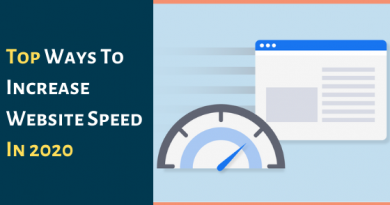SEO Decisions You Need Making Before Designing Your Site
This article is all about the SEO factors that need to be determined before the website brief is discussed with web designers and developers. The factors are:
• Wider strategic areas
• Technical areas
• Design areas
This post isn’t about a pre-launch checklist of web design and development hence the elements like robots.txt, title tags and analytics aren’t included in the list. These factors are related to SEO only.
Wider strategic questions that should be answered:
1. How do you communicate our mission statement online?
First, you determine “value proposition” of your marketing in the traditional market and then you consider how to communicate it online.
What is the search volume of your traditional marketing “value proposition”? If the volume is little then you need associating your brand with needs of targeted customers to come in search results.
Are these search terms too competitive? If the competition is high then you should create alternative long-tail keywords for your business.
2. Do you understand our customer segments?
Identify your customers and create a niche market for your business. Answer the following questions to determine customer segment.
What is the size of your market? Is the number of targeted customers growing or the market is shrinking?
Identify key factors like demography, motivation, role, and needs of customers.
Analyze the behavior of customers; see how do they react offline and what could be their behavior online. Do they’ve any touching points beyond the site?
In this way, you can create a definite structure for your site and the structure will help the visitors get the message and make an opinion on the site. But the structure should be determined before the site is sent for designing. The structure will include targeted keywords and making web pages according to keyword intent.
3. Who your digital competitors are?
Identifying key players in the market will help you make informed decisions regarding site structure, keyword research, and its reach. You can categorize your competitors as:
Search competitors: These are high ranking sites and also they could target the keywords you’re targeting. But keywords intent of these sites might be different.
Business competitors: These are direct competitors that are targeting the audiences you want to contact.
Cross-industry competitors: These sites aren’t your direct competitors but they also target the same audiences that you’re targeting in an indirect way.
After analyzing competition and identifying competitors, you’ll get an idea on where each competitor stands; how they’re doing and how much resources and time you need to reach at the position, your competitors are standing on. What you need knowing is:
What is the size and performance of competitors?
How are they different from each-other?
How strong their brand building is?
What is the design of their link profiles?
How are they different from your site? Are they investing more on architecture and design of site?
You can take advantage of tools that could assist you in this job.
Technical areas to consider in order to avoid future migration/rebuild
1. HTTP or HTTPS
You need an HTTPS site and if your site is on HTTP then you should convert it into HTTPS as it is the norm and if you plan accepting payments then the site has to be on HTTPS. Google also considers HTTPS in ranking.
2. Decide on a canonical version of your URLs
Duplicate content issues could come up, if Google finds the same content on multiple URLs. But the problem can be sorted out before the site goes for designing. Have one version for each page to maintain transparency and clarity in content.
For a developer, it’s ID in the database that determines uniqueness of a web page but search engine identifies a page with its URL. The developer should know it and he should create individual URLs for each page.
3. Site speed
Downloading speed of pages (site speed) matters most in SEO as well as in marketing but developers could leave gaps in coding to meet deadlines. It is better, if you could remind the developer to keep the site speed in mind while coding.
4. Language and locations
If you’re targeting different markets, you should first determine whether the site will be multi-lingual or multi-regional or both. Issues like hrelfang, local keywords and duplicate content must be addressed in advance instead of post design and development.
Having country level domains will be an added advantage as the domains will help in targeting countries closely. But it depends on how you build infrastructure, promote domains and write unique content for each domain.
If you plan to keep multiple countries/languages on one site then its better you make subfolders that can be managed from one CMS. Creating subfolders on CMS will make development/maintenance a hassle-free affair.
5. Ease of editing and flexibility in a platform
Look at Google for latest guidelines for sites and keep your site updated according to Google recommendations.
Design areas to consider in order to avoid future redesign
1. Architecture and internal linking
An informative architecture will be more effective for your site. A flat structure that is no deeper than 4 clicks is best suited for search engine spiders and also for human visitors. It will allow the crawlers and visitors to find content in a few clicks instead of making them digging deeper in the site.
2. Content-first design
What type of content will you publish/provide to your visitors? Will it be an ebook, white papers style or a video library? There has to be a strategy for content as you’ll communicate with your visitors using content and also the search engine will rely on content for information.
3. Machine readability (Flash, JS, iFrame) and structured data
You’ll use different technologies like Java, Ajax and Flash to build web pages. These technologies will certainly improve design and functionality of the pages but at the same time it can create problems with readability of content. The developer should markup the pages with structured data.
4. Responsive design
Considering the variation in devices and their requirements, you should keep the responsiveness of website design in mind. Today mobile is also considered a platform for viewing websites and downloading pages. The long-term goal of web design is to target all the platforms in order to reach larger audiences. The responsive design will create a device-specific experience that will interest the targeted customers.
Closing thoughts
As an entrepreneur you’re responsible for successfully launching your site and to the site successful, you need keeping many things in mind. While most of the things can be looked after when the site is launched, some factors need to be decided before the site goes for designing. This article will help you keep a tab over design and development.





